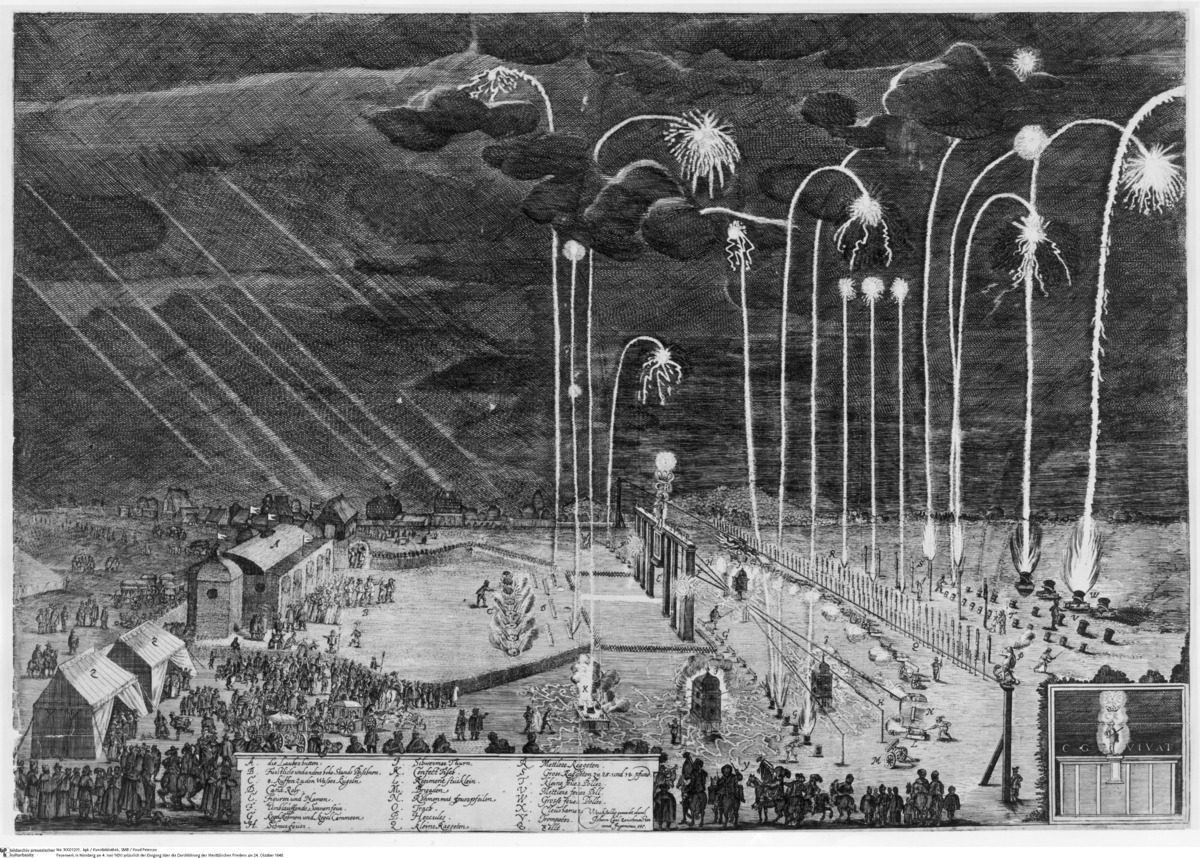Abstract
The Peace of Westphalia marked the end of the Thirty Years War, a
devastating conflict that had brought three decades of armed clashes,
disease, and starvation to the German lands, laying waste to the
landscape and depopulating entire regions. After five years of
negotiations, the treaty was finally signed on October 14/24, 1648.* The
signing of the treaty was greeted with relief on all sides; it was a
momentous event and was perceived as such by contemporaries. This image
shows a fireworks display in celebration of the agreement on the
treaty’s implementation. The festivities took place in Nuremberg on June
4, 1650; they were held during the Executive Congress and had been
organized by Swedish plenipotentiary Count Palatinate Karl Gustav von
Pfalz-Zweibrücken (1622-60), who went on to become Charles X of Sweden
(r. 1654-60).
* Note: Both the Julian calendar (Old
Style) and the Gregorian calendar (New Style) were used in Europe
between 1582 and 1752. Protestants retained the Julian calendar while
Catholics used the Gregorian one. At the time, the two calendars
differed by ten days. October 14, 1648, is the date of the signing of
the Peace Treaties of Westphalia according to the Julian calendar;
October 24, 1648 is the date according to the Gregorian
calendar.
